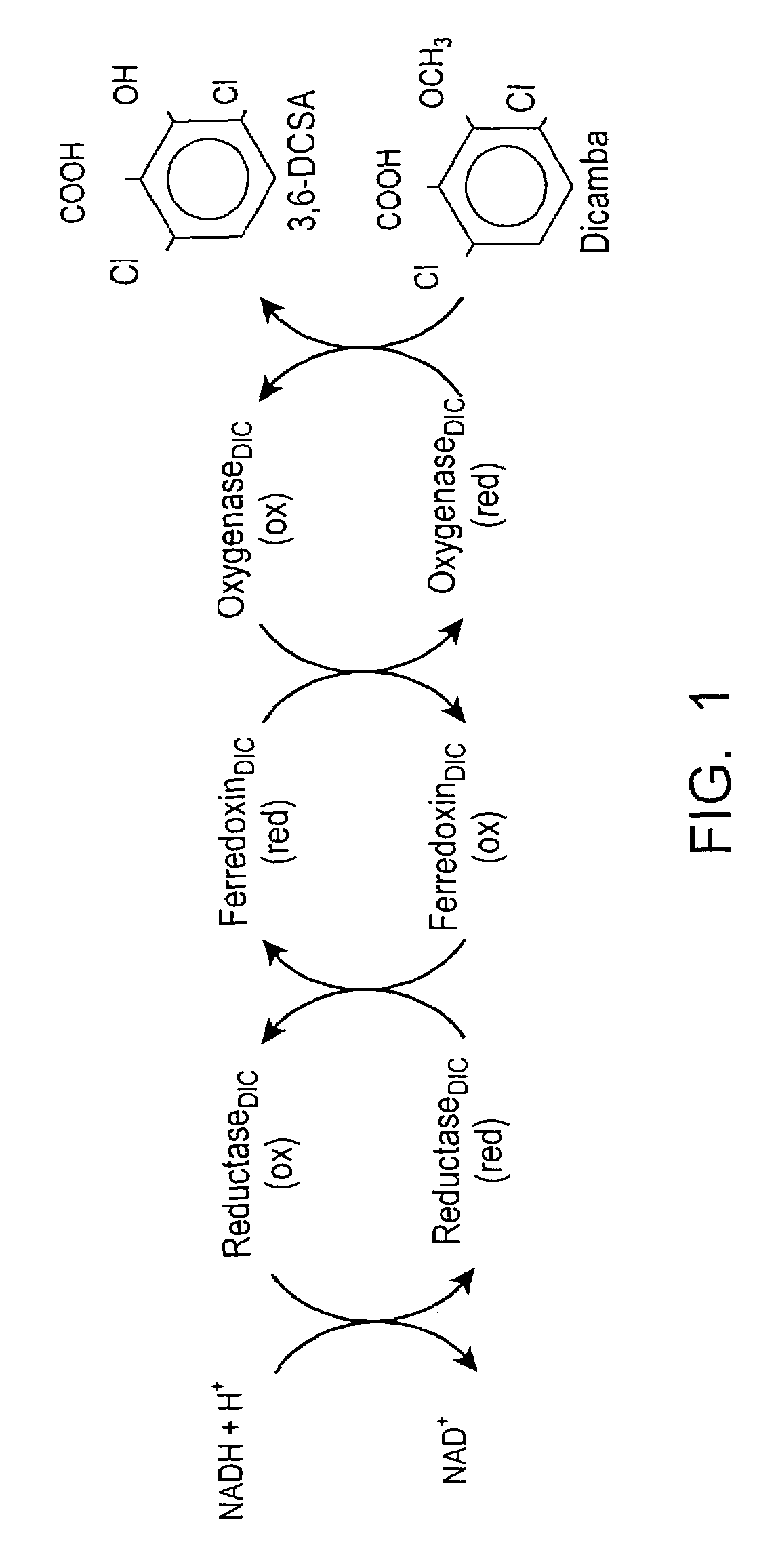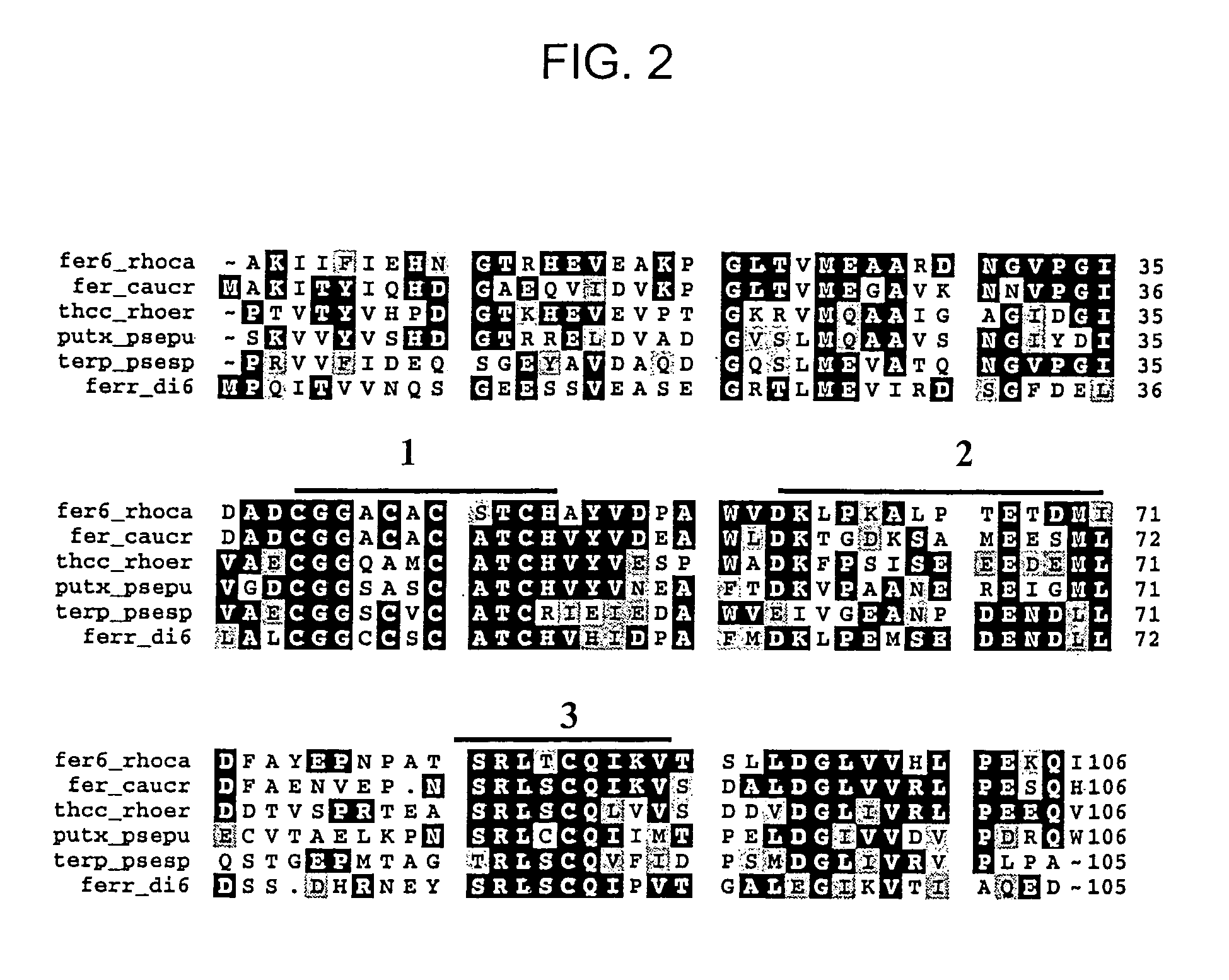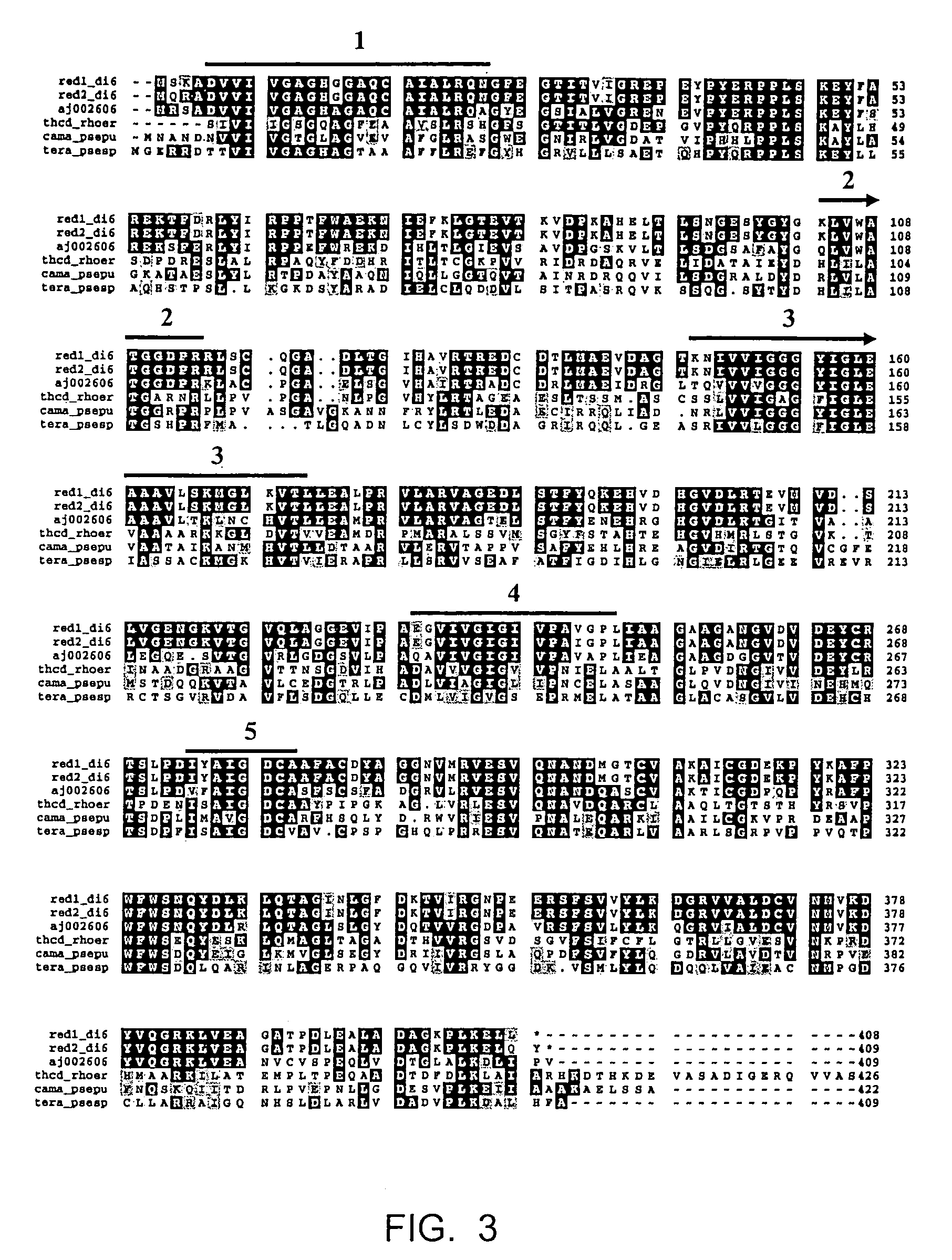Methods and materials for making and using transgenic dicamba-degrading organisms
a technology of dicamba and degrading organisms, applied in the field of transgenic organisms, can solve the problems of dicamba degrading organisms that herbicides that will either diminish the productivity of cash crops or kill them altogether, and can injure many commercial crops
- Summary
- Abstract
- Description
- Claims
- Application Information
AI Technical Summary
Benefits of technology
Problems solved by technology
Method used
Image
Examples
example 1
Purification And Characterization of the Components of Dicamba O-Demethylase of Pseudomonas maltophilia DI-6
Methods and Materials:
[0074]Bacterium and growth conditions. Pseudomonas maltophilia, strain DI-6 (Kreuger, et al., (1989) J. Agric. Food Chem., 37:534–538) was isolated from a soil site persistently contaminated with dicamba. The bacterium was provided by Dr. Douglas Cork of the Illinois Institute of Technology (Chicago, Ill.), and was maintained on reduced chloride medium (Kreuger, J. P., (1989) Ph.D. thesis, Illinois Institute of Technology, Chicago, Ill.), supplemented with either dicamba (2 mg / ml) or a mixture of glucose (2 mg / ml) and Casamino Acids (2 mg / ml). The carbon sources were filter-sterilized and added to the medium after it was autoclaved. Solid media were prepared by the addition of 1% (wt / vol) Gelrite (Scott Laboratories, West Warwick, R.I.).
[0075]Chemicals and reagents. Dicamba, 3,6-DCSA, and [14C]dicamba (U-phenyl-14C, 42.4 mCi / mmol, radiochemical purity gre...
example 2
Identification and Sequencing of a Clone Coding for the Oxygenase of Dicamba O-Demethylase of Pseudomonas maltophilia DI-6
[0126]As noted in Example 1, the first 29 amino acids of the N-terminal amino acid sequence of oxygenaseDIC had been determined to be (residues in parentheses are best guesses):
[0127]Thr Phe Val Arg Asn Ala Trp Tyr Val Ala Ala Leu Pro Glu Glu Leu Ser Glu Lys Pro Leu Gly Arg Thr Ile Leu Asp (Asp or Thr) (Pro)
[0128][SEQ ID NO: 1].
[0129]This sequence permitted the design of degenerate oligonucleotide probes which were synthesized by Operon, Alameda, Calif. In particular, a mixture of 32 probes, each of which was 17 nucleotides in length, and contained all of the possible nucleotide sequences which could encode the amino acid sequence highlighted in bold above, was used. The oligonucleotide probes were 3′-end-labeled with digoxigenin (DIG) according to instructions provided by Boehringer Mannheim, Indianapolis, Ind.
[0130]The DIG-labeled probes were first hybridized t...
example 3
Purification and Characterization of Components of Dicamba O-Demethylase of Pseudomonas maltophilia DI-6
[0133]Bacterial cultures and preparation of cleared cell lysates. Pseudomonas maltophilia, strain DI-6, was inoculated into six two-liter Erlenmeyer flasks containing one liter of reduced chloride medium (Kreuger, J. P. 1989. Ph.D. thesis. Illinois Institute of Technology, Chicago) supplemented with glucose (2.0 mg / ml) and Casamino acids (2.0 mg / ml) as the carbon sources. Cultures were incubated on an orbital shaker (225 rpm at 30° C.). Cells were harvested at an A600 ranging from 1.5 to 2.0 using a JLA-10.500 rotor in a Beckman Avanti J-25I Centrifuge at 4,000× g for 20 minutes. Pelleted cells were stored at −80° C. The frozen cells were resuspended in 40 ml of 100 mM MgCl2, pelleted again using the same conditions as above, and then resuspended in breaking buffer (100 mM 3-[N-morpholino]propanesulfonic acid (MOPS) (pH 7.2), 1 mM dithiothreitol, 5% glycerol) in a ratio of 2 ml br...
PUM
| Property | Measurement | Unit |
|---|---|---|
| emission wavelength | aaaaa | aaaaa |
| emission wavelength | aaaaa | aaaaa |
| thickness | aaaaa | aaaaa |
Abstract
Description
Claims
Application Information
 Login to View More
Login to View More - R&D
- Intellectual Property
- Life Sciences
- Materials
- Tech Scout
- Unparalleled Data Quality
- Higher Quality Content
- 60% Fewer Hallucinations
Browse by: Latest US Patents, China's latest patents, Technical Efficacy Thesaurus, Application Domain, Technology Topic, Popular Technical Reports.
© 2025 PatSnap. All rights reserved.Legal|Privacy policy|Modern Slavery Act Transparency Statement|Sitemap|About US| Contact US: help@patsnap.com



